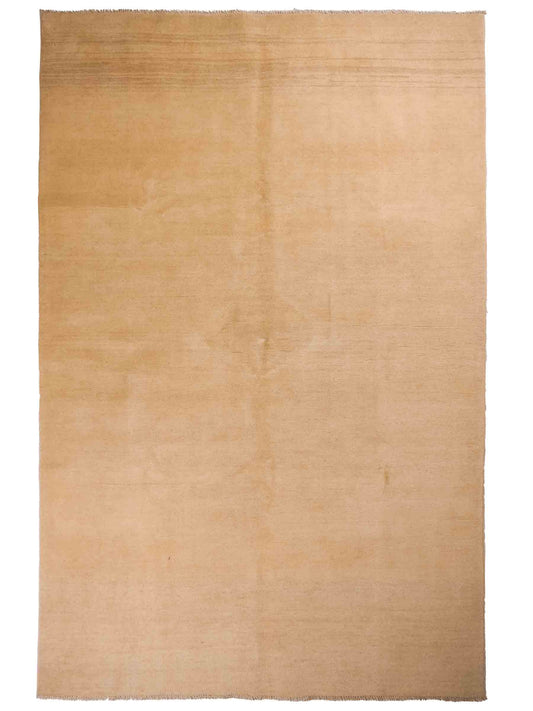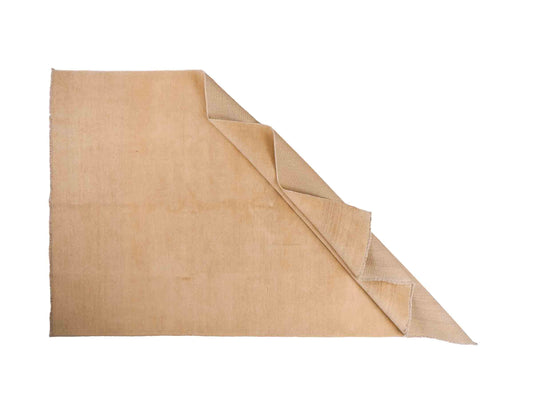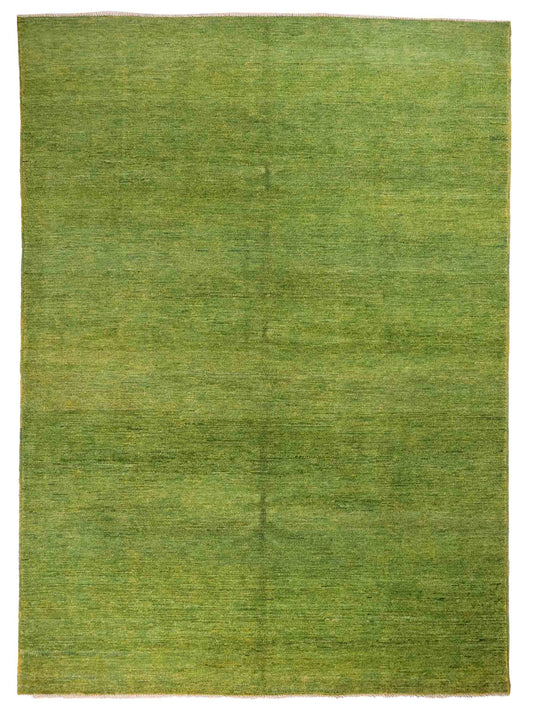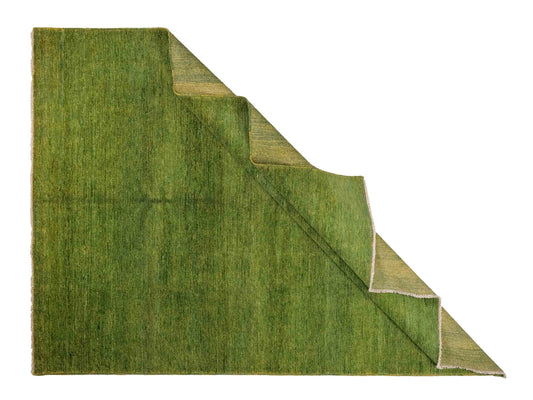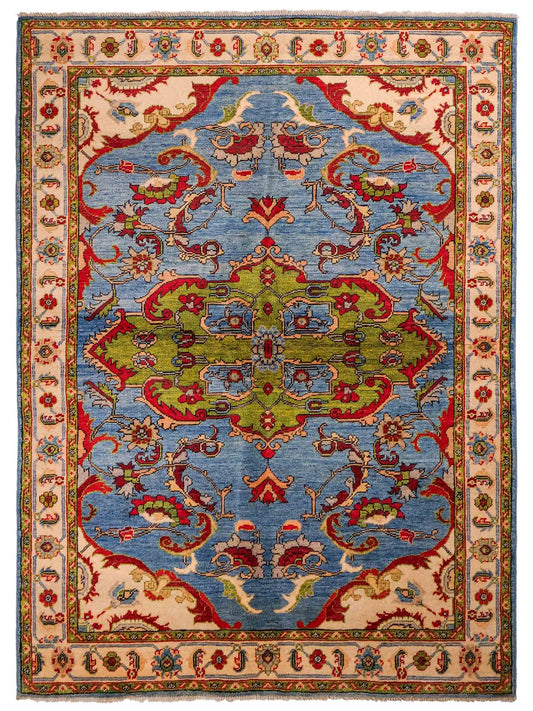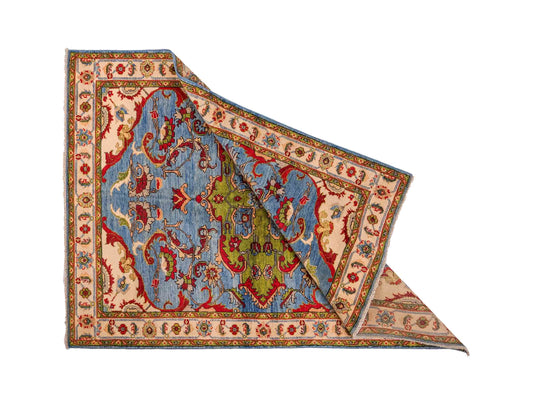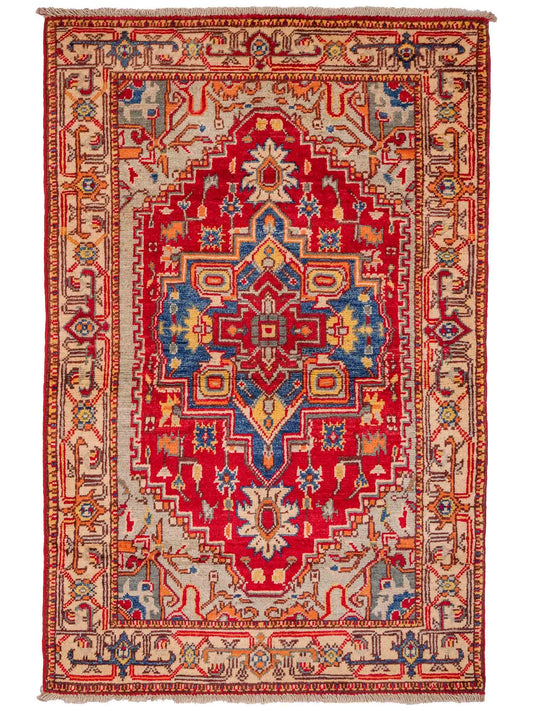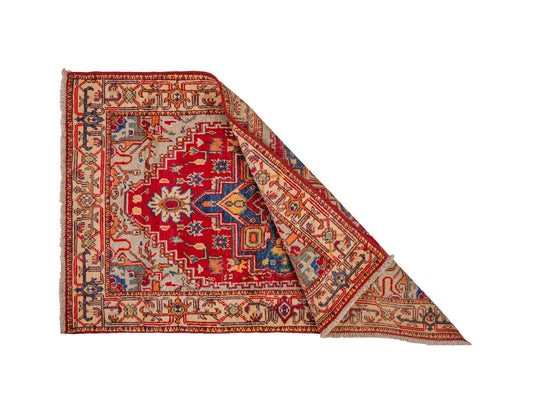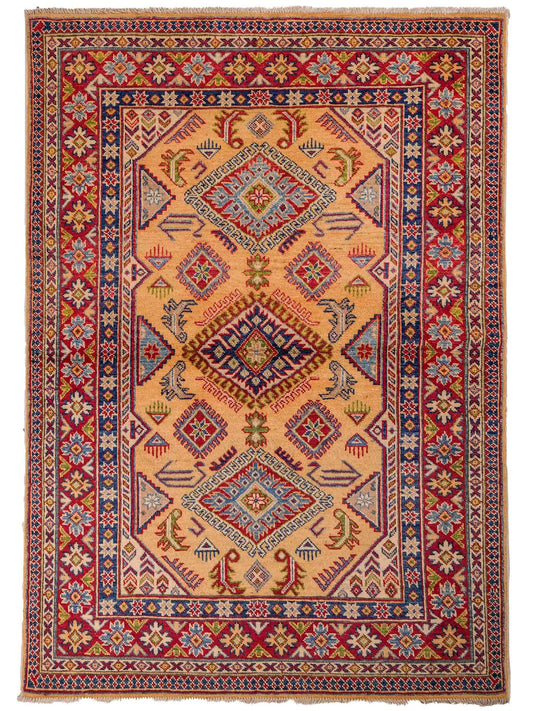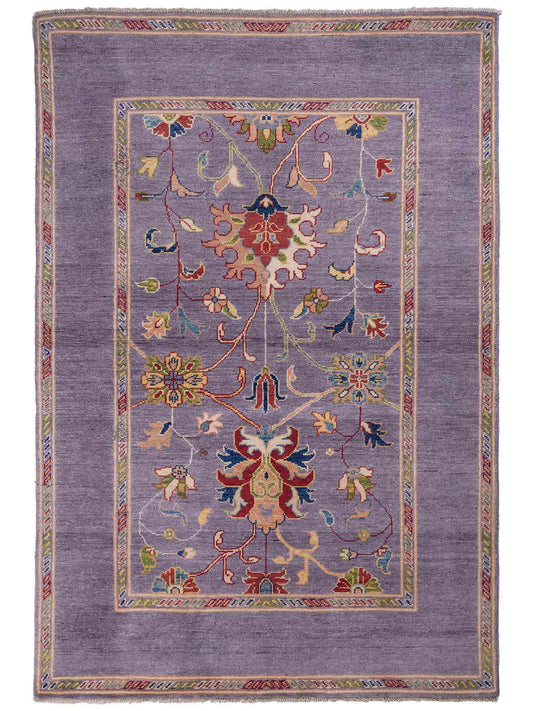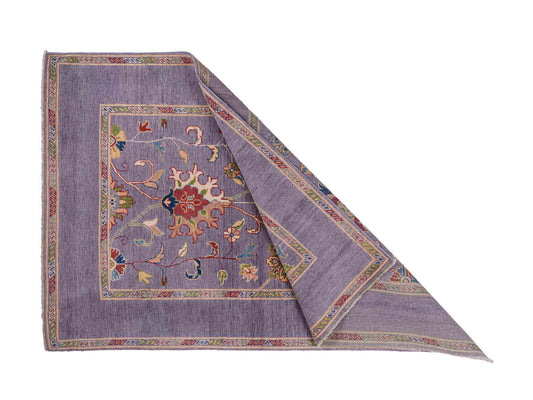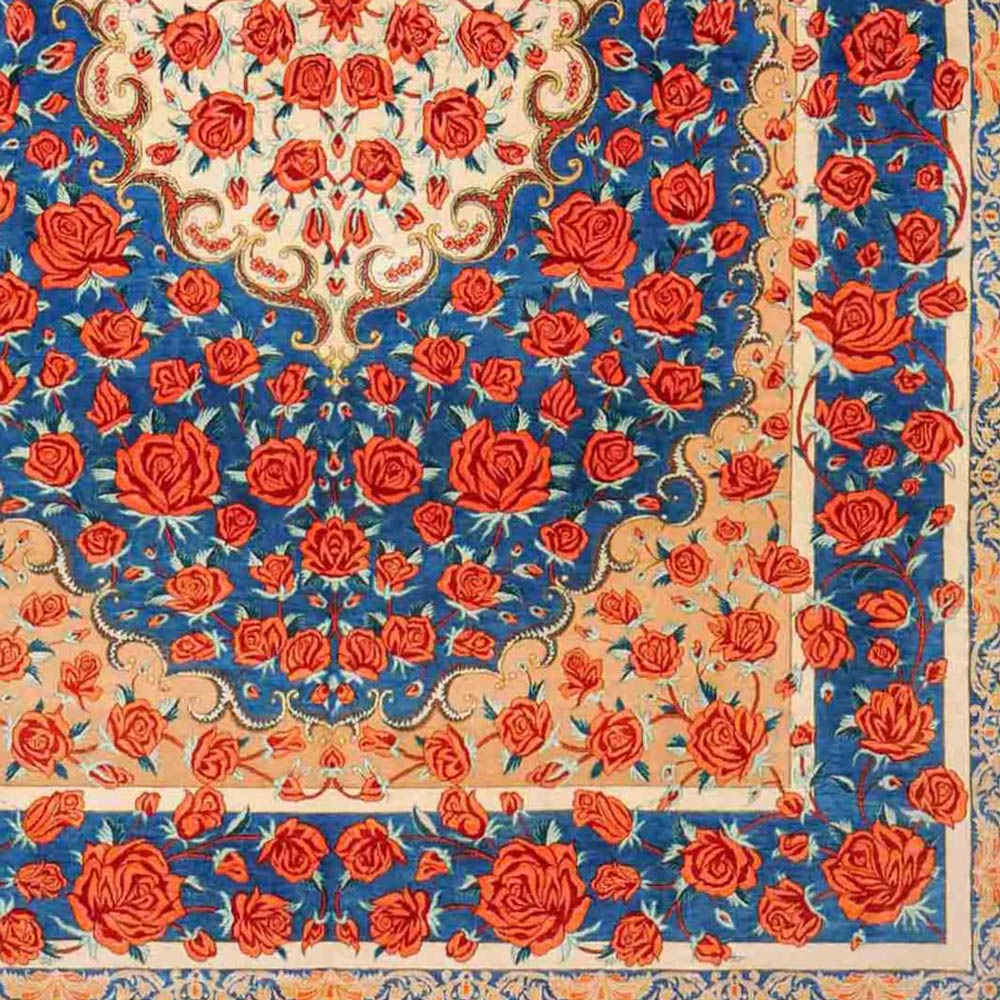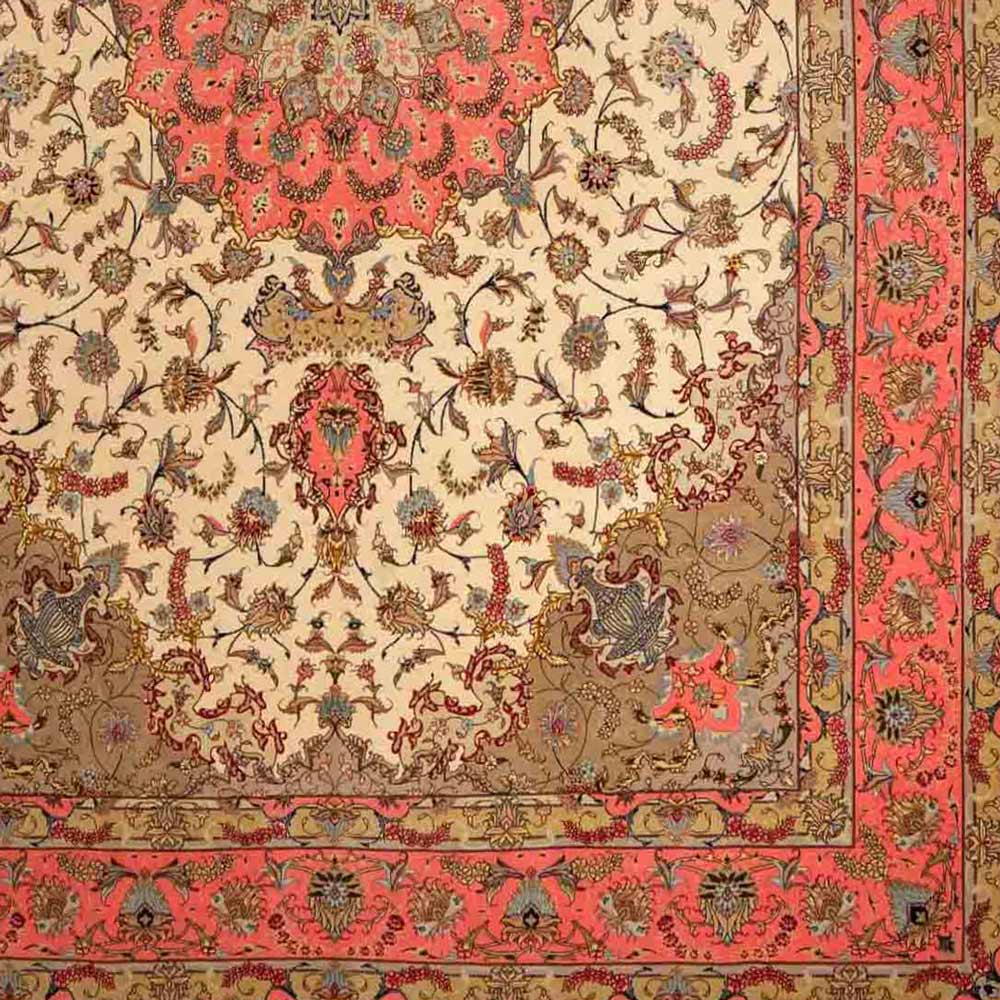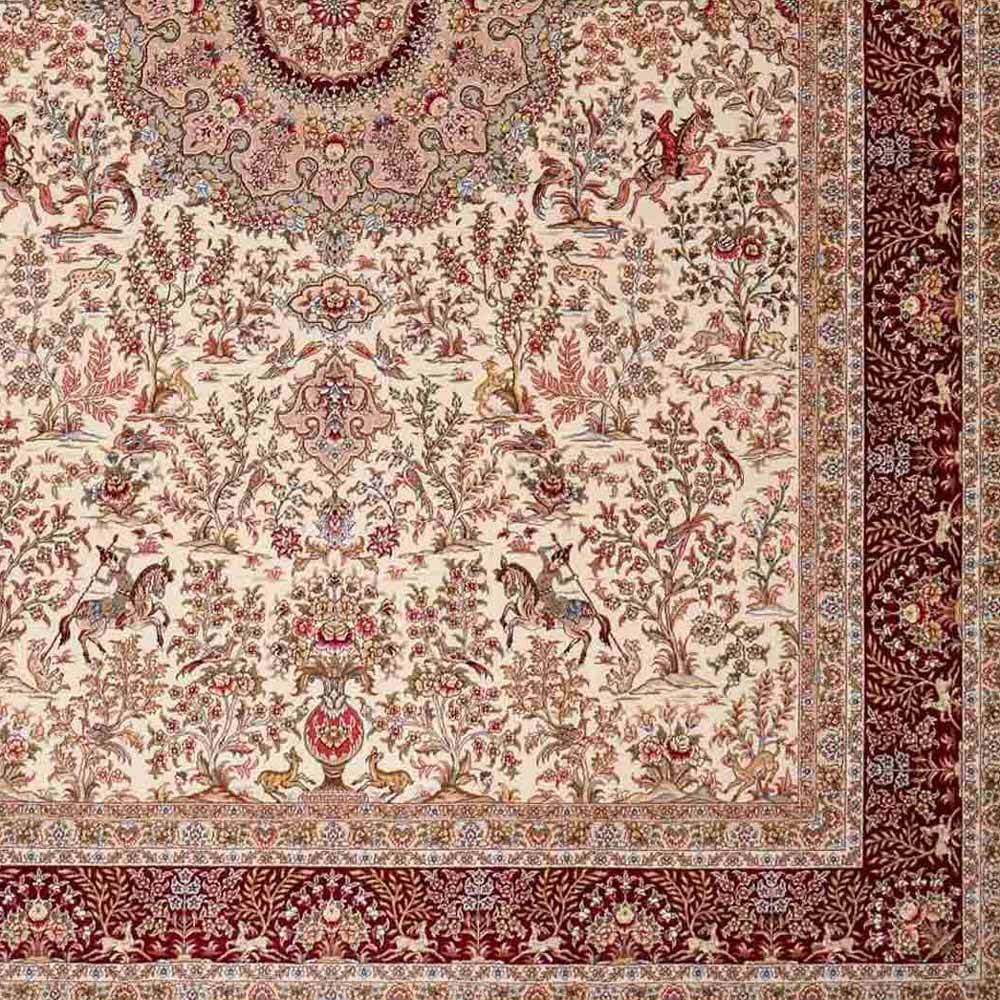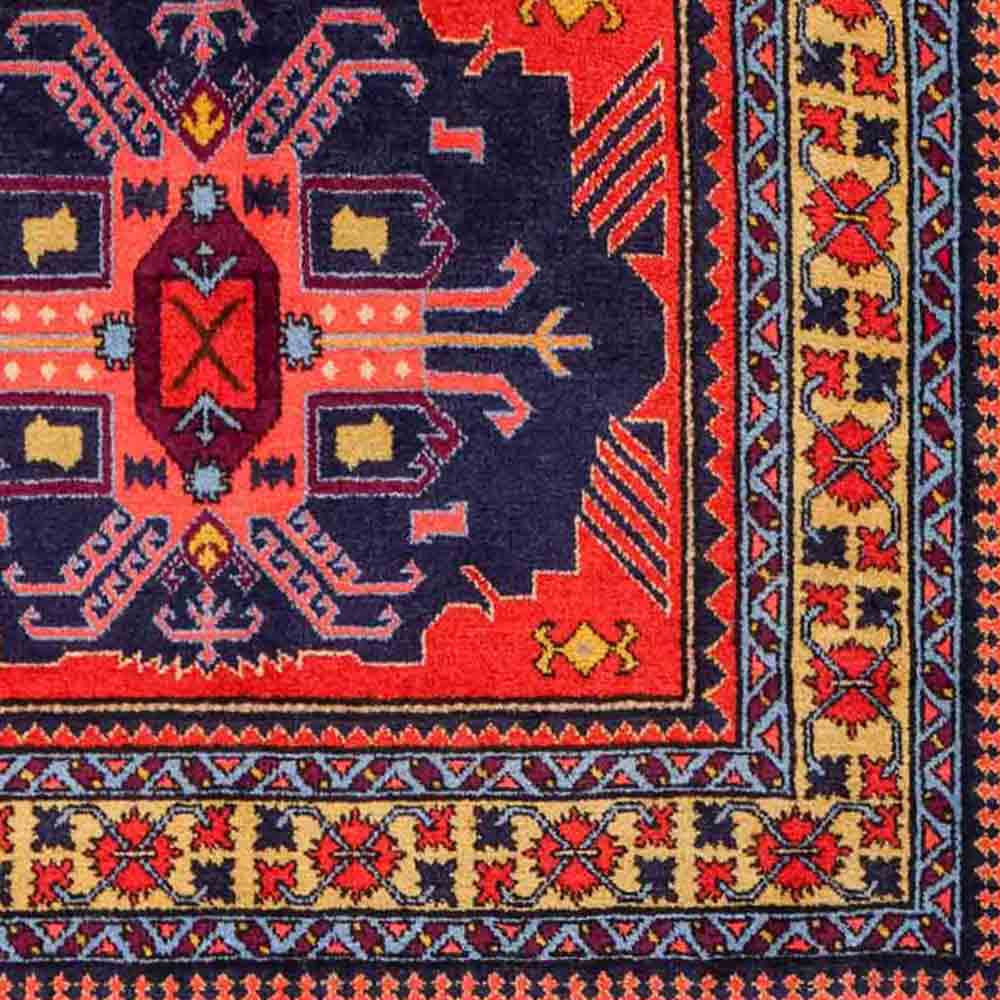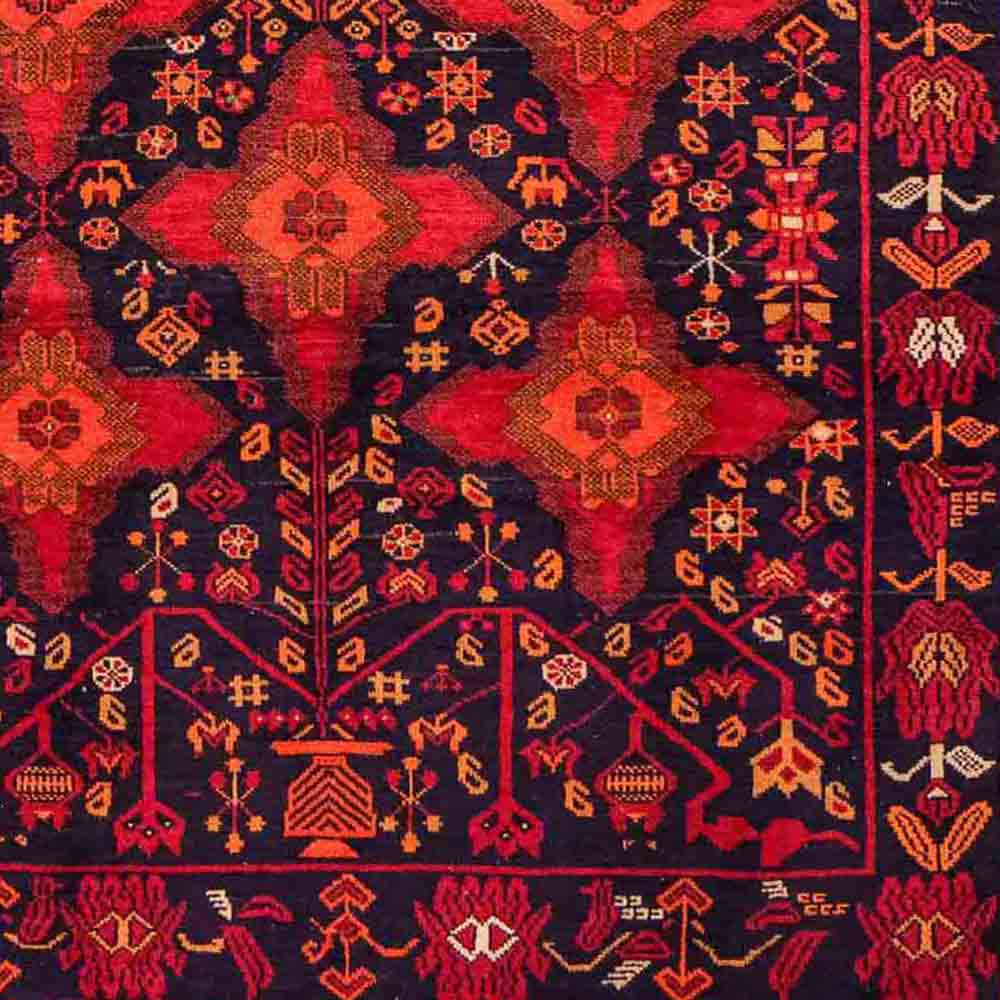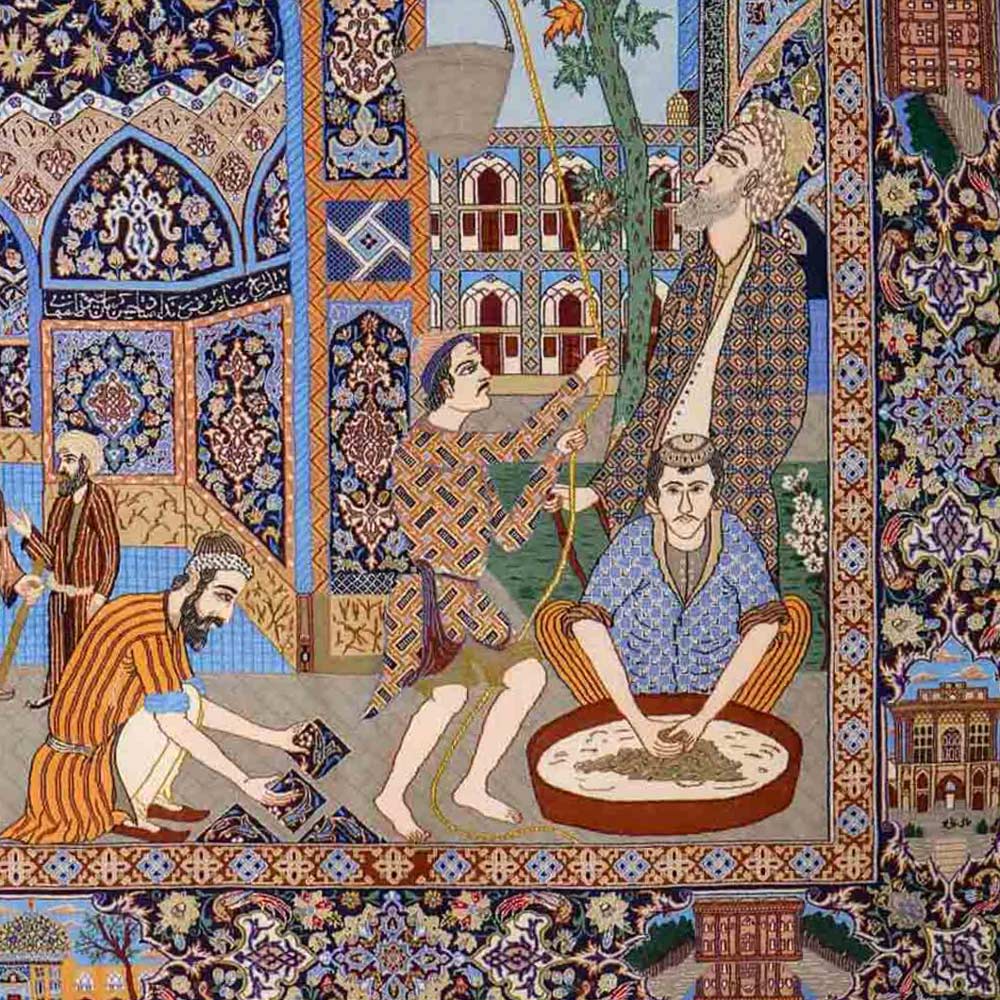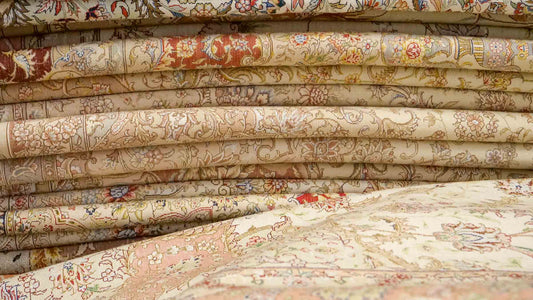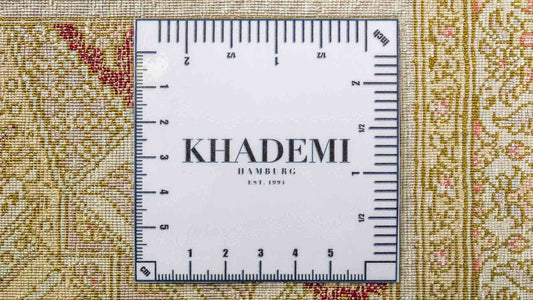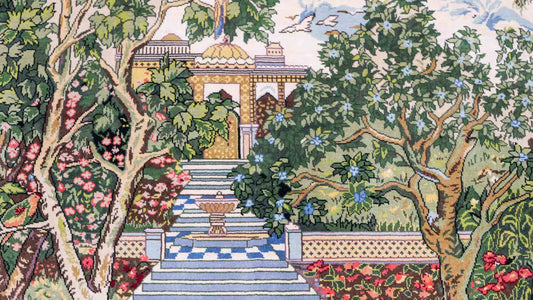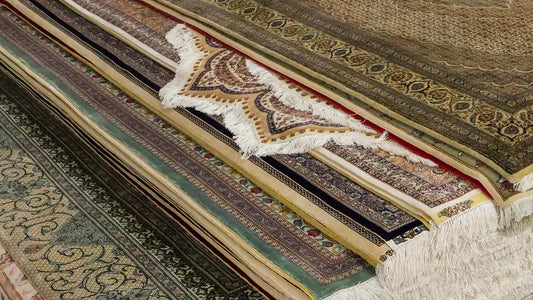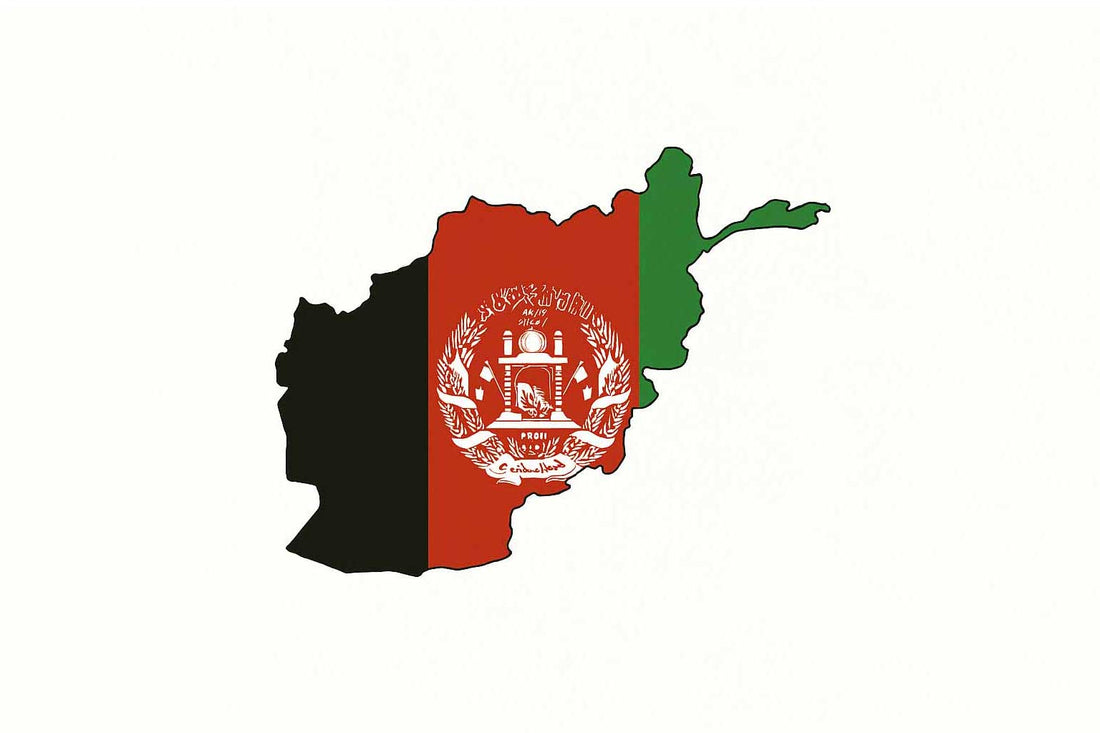
Afghanistan: Hand-Knotted Stories
Daniel KhademiAnyone drawn into the fascinating world of rugs will quickly discover the beauty and diversity of Afghan carpets. These masterpieces are a true reflection of Afghanistan’s rich, multicultural heritage and, as handcrafted originals, create a stylish focal point in any room. Join us as we explore the history, unique characteristics, regional diversity, materials, and craftsmanship behind authentic Afghan rugs.
Afghan Rugs: Key Facts at a Glance
- Authentic handmade pieces from iconic regions like Kabul, Herat, Balkh, and Kandahar
- Deep, rich colors: reds, blues, creams & earthy natural tones
- Distinctive geometric, floral & pictorial patterns
- Premium materials: soft high-grade wool, occasional silk, and durable cotton
- Traditional knotting with high knot density
- True symbols of resilience, artistry, and cultural identity
- Every carpet tells its own unique story
Discover Our Exclusive Afghan Rugs – Explore the Full Collection Now!
The History & Significance of Afghan Rugs
The tradition of rug weaving in Afghanistan dates back to ancient times. Afghan rugs are deeply rooted in the culture and everyday lives of the nation’s diverse ethnic groups—including Pashtuns, Tajiks, Hazaras, and Uzbeks. Each group has developed its own distinctive motifs, colors, and techniques. Turkmen communities, in particular, utilize unique knotting methods that make their rugs exceptionally robust.
Throughout wars and times of conflict, Afghanistan’s rug-making art has thrived, and countless master weavers have produced pieces now cherished worldwide. Afghan carpets stand as a symbol of resilience and creative spirit. The rug industry also provides vital income for many families and helps preserve age-old artisanal skills.
Designs, Patterns & Colors of Afghan Rugs
Afghan rug designs are extraordinarily diverse, reflecting deep cultural and ethnic roots. The most common themes include:
- Geometric patterns: Often highly structured and iconic for Pashtun and Turkmen tribes, these designs are frequently inspired by nature and carry profound spiritual meaning within Afghan culture.
- Floral motifs: Capturing the beauty of nature with flowers, leaves, and natural elements. Carpets from northeastern Afghanistan, especially Balkh, are renowned for their vivid floral patterns that tell stories of fertile land and abundant harvests.
- Pictorial motifs: Some carpets depict tales from Afghan folklore or everyday life. These motifs are both decorative and significant, visually preserving traditions and cultural richness.
The color palette is characteristically deep, ranging from rich reds and blues to soft cream—mainly achieved with natural plant and mineral dyes, a testament to the region’s artisanal heritage.
Premium, Natural Rug Materials
Choosing the right materials is vital to the quality and longevity of Afghan rugs, which most often feature:
- Wool: The most widely used fiber, valued for its durability and natural comfort. Afghan wool is uniquely textured and colored, contributing to the signature feel of these carpets. Sheep farming plays a significant role in Afghanistan and ensures steady access to high-quality wool.
- Silk: Rare but exceptionally luxurious, silk rugs offer a glossy, ultra-soft finish. Many combine silk and wool for unique texture and sheen, making them highly desirable to collectors.
- Cotton: Commonly used for the warp threads, cotton offers strength and cost-effectiveness, making it ideal especially in everyday carpets.
Knotting Techniques & Knot Density in Afghan Rugs
The predominant technique is the Turkish (symmetrical) knot, which makes possible both high-density and intricate design.
- High-end rugs: Typically feature 400,000 to over 1,000,000 knots per square meter—ultra-durable with finely detailed patterns reflecting the artisan's skill and creativity.
- Mid-range rugs: Generally 200,000 to 400,000 knots/sqm—delivering both style and value.
- Rustic rugs: Less than 200,000 knots/sqm—showcasing simple, robust designs that celebrate rural craftsmanship. Knot count is a vital quality indicator: the higher the density, the finer the detail.
Major Afghan Rug Regions
Some of the most prominent regions in Afghanistan where rugs are made include:
| Region | Key Features | Colors & Designs | Noteworthy Aspects |
| Kabul | Versatile, modern & traditional | Wool, silk, diverse palette |
Center for Afghan rug making, new interpretations |
| Herat | Exquisite, floral & geometric | Earthy tones, rich reds |
Rug-making hub for generations |
| Balkh | Detailed, lively | Vibrant colors, fine detail | Historic, symbol-laden motifs |
| Kandahar | Robust wool rugs | Bold colors, classic designs |
Durable & highly sought after, at home and abroad |
Care & Value Retention of Afghan Rugs
Hand-knotted rugs from Afghanistan are extremely durable when properly maintained—and remain enduringly popular as investments.
Care Tips:
- Avoid direct sunlight
- Use mild cleaning products only
- Rotate your rug regularly
For more detailed advice, visit our blog post: *How to Care for Hand-knotted Rugs*.
If you are interested in purchasing an afghan rug, we recommend requesting an expert appraisal and reading our article: *Are Hand-Knotted Rugs a Good Investment?*
Checklist: How to Identify a High-Quality Afghan Rug
- Handmade: Subtle pattern irregularities confirm true craftsmanship
- High knot density: Minimum 200,000 knots/sqm; top-grade rugs exceed 400,000
- Natural materials: Pure wool or wool-silk blends, strong cotton foundation
- Signature colors: Vibrant natural reds, blues, and creams
- Distinct motifs: Well-defined geometric, floral, or pictorial patterns
- Touch & feel: Dense, soft yet sturdy pile
- Back view: Patterns are clearly visible on the reverse
- Professional advice: When in doubt, consult an expert and always request a certificate of authenticity
FAQ – Frequently Asked Questions about Afghan Rugs
What makes Afghan rugs so special?
► Their cultural and ethnic diversity, outstanding craftsmanship, and use of natural materials.
Are Afghan rugs a sound investment?
► Absolutely—especially hand-knotted originals with high knot density and natural dyes are highly sought after worldwide.
How do I properly care for an Afghan rug?
► Clean gently, avoid direct sunlight, rotate regularly. More tips can be found in our Rug Care Guide.
How can I recognize a genuine hand-knotted rug?
► Seek professional guidance, check knot count and patterns, and request documentation of origin.
Conclusion
Afghan rugs are so much more than decoration: Every piece embodies the history, resilience, and creativity of Afghanistan. They turn any space into something truly unique and are a statement of character and lasting value.
Want to learn more? Discover our related blog articles → Design Classics, Countries of Origin, Carpet Materials, Carpet Guide

